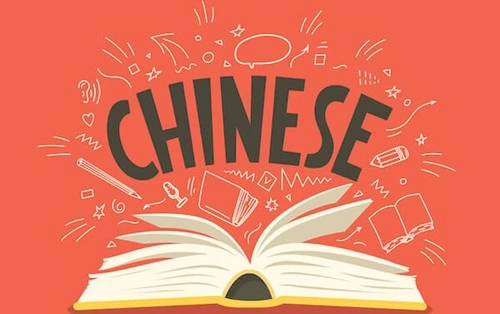The Chinese language is one of the oldest, most complex, and widely spoken languages in the world. With over 1.4 billion speakers, it is the most spoken language globally, encompassing a vast range of dialects and a rich cultural history. The language holds an esteemed position in the global linguistic landscape due to its historical significance, influence on other languages, and unique writing system.
In this article, we explore some of the most fascinating facts about the Chinese language that highlight its complexities, variations, and global relevance.

1. The Most Spoken Language in the World
Chinese is the most spoken language in the world, with over 1.2 billion people speaking it as their first language. This accounts for nearly 16% of the world’s population! The majority of speakers are concentrated in China, Taiwan, Singapore, and several other countries with significant Chinese communities. The language also has a growing number of learners worldwide, especially due to China’s expanding global influence.
2. A Language Family with Multiple Dialects
The term “Chinese language” does not refer to a single language but rather a group of related dialects. The Sinitic branch of the Sino-Tibetan language family includes dialects like Mandarin, Cantonese, Shanghainese, and Hokkien.
- Mandarin is the most widely spoken dialect, used by about 70% of the Chinese population. It is the official language of China, Taiwan, and one of the official languages of Singapore.
- Cantonese is spoken primarily in Hong Kong, Macau, and the Guangdong province.
- There are several other regional dialects, many of which are mutually unintelligible, meaning speakers of one dialect may not understand another without prior knowledge.
3. The Oldest Written Language
The Chinese writing system is the oldest continuous system of writing still in use today. Its origins can be traced back over 3,000 years to the Shang Dynasty, where ancient Chinese characters were first used in oracle bones for divination. These early forms of the language have evolved into the modern Chinese characters used today, but the script retains strong ties to its ancient roots.
4. The Chinese Writing System: Characters, Not Letters
Unlike most languages that use alphabets, Chinese uses a logographic writing system. This means that each character represents a word or a meaningful part of a word, rather than a sound. There are over 50,000 characters in Chinese, although only around 2,500–3,500 characters are used for daily communication.
- Each character can have different meanings based on the context.
- Characters are often made up of radicals, which are smaller components that provide clues about their meaning or pronunciation.
Learning to read and write Chinese is considered a challenging task due to the large number of characters one must master, but it is also highly rewarding for learners.
5. Simplified vs Traditional Chinese Characters
There are two main systems of Chinese characters: Simplified Chinese and Traditional Chinese.
- Simplified Chinese was introduced in the 1950s by the Chinese government to increase literacy rates. The characters have fewer strokes and are easier to write. This system is used in mainland China and Singapore.
- Traditional Chinese retains the more complex characters and is used in Taiwan, Hong Kong, and Macau. Traditional Chinese is known for its intricate designs and historical value.
Both systems are mutually intelligible in terms of spoken language, but they can look very different in written form.
6. Tonal Language
One of the unique features of the Chinese language, especially Mandarin, is that it is a tonal language. This means that the tone in which a word is pronounced changes its meaning. In Mandarin, there are four main tones:
- High level tone (ā) – a flat tone.
- Rising tone (á) – the tone rises, like asking a question.
- Falling-rising tone (ǎ) – a dip in the middle of the sound.
- Falling tone (à) – a sharp falling tone.
For example, the syllable “ma” can mean different things depending on the tone:
- Mā means “mother”,
- Má means “hemp”,
- Mǎ means “horse”,
- Mà means “scold.”
Mastering the tonal aspect of Chinese is crucial for learners to avoid misunderstandings and convey the correct meaning.
7. Chinese Grammar: Simple but Different
Chinese grammar is relatively simple compared to languages like English or French. For instance:
- No tenses: Chinese doesn’t have verb conjugations to indicate past, present, or future tenses. Instead, words like “yesterday” (昨天, zuótiān) or “tomorrow” (明天, míngtiān) are used to clarify the time frame.
- No plurals: Nouns do not have plural forms. The same word is used for both singular and plural, and context or additional words indicate quantity.
- No gender: Chinese nouns and pronouns are not gendered, making it simpler in terms of gender agreement, unlike many European languages.
Despite these simplified grammatical rules, constructing sentences in Chinese requires an understanding of proper word order and particle usage.
8. Chinese Pinyin System
To help non-native speakers and young children learn Chinese pronunciation, the Pinyin system was developed. Pinyin is a romanisation system that uses the Latin alphabet to represent the sounds of Mandarin Chinese. It allows learners to read and pronounce Chinese words without knowing the characters. For example, the word for “hello” is written in Pinyin as “nǐ hǎo” (你好).
Pinyin has become an essential tool in language learning and is often used for inputting Chinese characters on computers and smartphones.
9. Chinese Idioms and Proverbs (Chengyu)
Chinese is known for its rich collection of idioms and proverbs called chengyu (成语), which are usually four-character expressions that encapsulate deep meanings or moral lessons. These idioms often originate from ancient Chinese stories, history, or myths. For example:
- 塞翁失马 (sāi wēng shī mǎ): “The old man lost his horse” is used to express that bad things can sometimes lead to good outcomes.
- 画蛇添足 (huà shé tiān zú): “Drawing legs on a snake” refers to overdoing something, adding unnecessary elements.
Chengyu are widely used in both spoken and written Chinese to convey complex ideas succinctly.
10. Influence on Other East Asian Languages
Chinese has had a profound influence on the languages of East Asia, particularly Korean, Japanese, and Vietnamese. These languages have borrowed a significant number of Chinese characters, vocabulary, and cultural concepts over the centuries.
For example, Japanese Kanji are derived from Chinese characters, and many Korean and Vietnamese words have Chinese roots. While these languages have developed their own writing systems and grammatical structures, the historical influence of Chinese is still evident in their scripts and vocabulary.
11. The Official Language of China
The official language of China is Standard Mandarin, also known as Putonghua (普通话), which means “common speech.” It is based on the Beijing dialect of Mandarin and is used in government, education, media, and as a lingua franca across the country.
However, due to China’s vast size and regional diversity, many people in different parts of the country speak their local dialects at home or within their communities, making China a linguistically diverse nation.
12. Chinese Calligraphy
Chinese calligraphy is an ancient art form that dates back thousands of years. It involves the artistic writing of Chinese characters using a brush and ink. Calligraphy is not just about writing beautifully; it is a highly respected art form in Chinese culture, combining beauty, discipline, and expression. Each stroke of the brush reflects the personality and skill of the calligrapher, making it one of the most valued forms of visual art in China.
Conclusion
The Chinese language is more than just a mode of communication; it is a window into one of the world’s oldest civilizations. From its complex writing system to its tonal nature, Chinese offers a unique linguistic experience that reflects the culture, history, and philosophy of China. Whether you’re interested in learning the language for business, travel, or cultural exploration, Chinese remains a highly rewarding language that opens doors to understanding a rich cultural legacy and a rapidly evolving global power.


